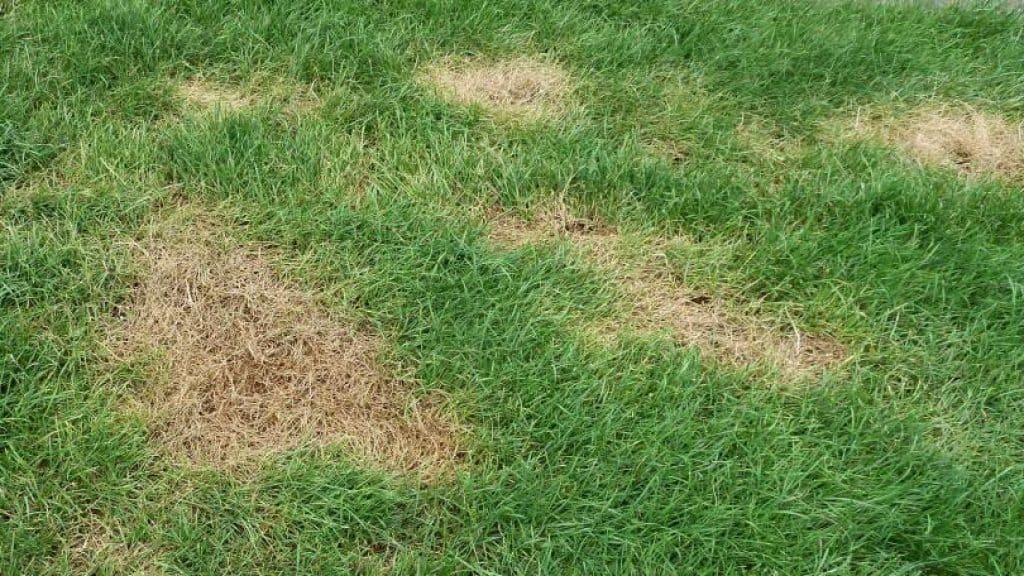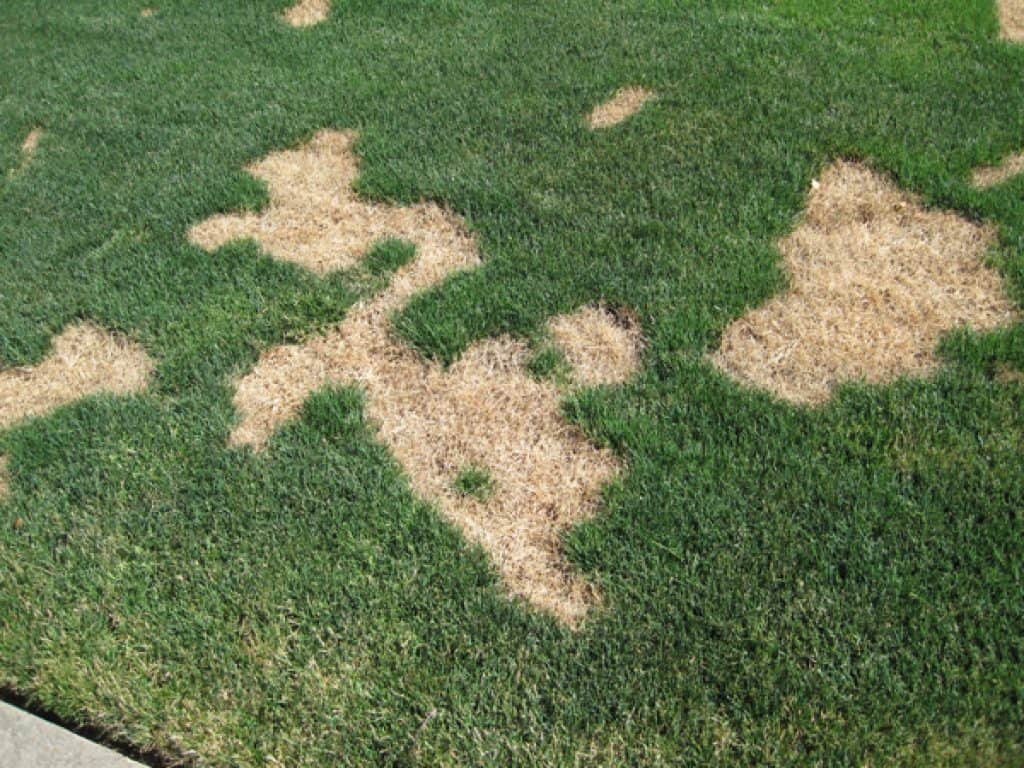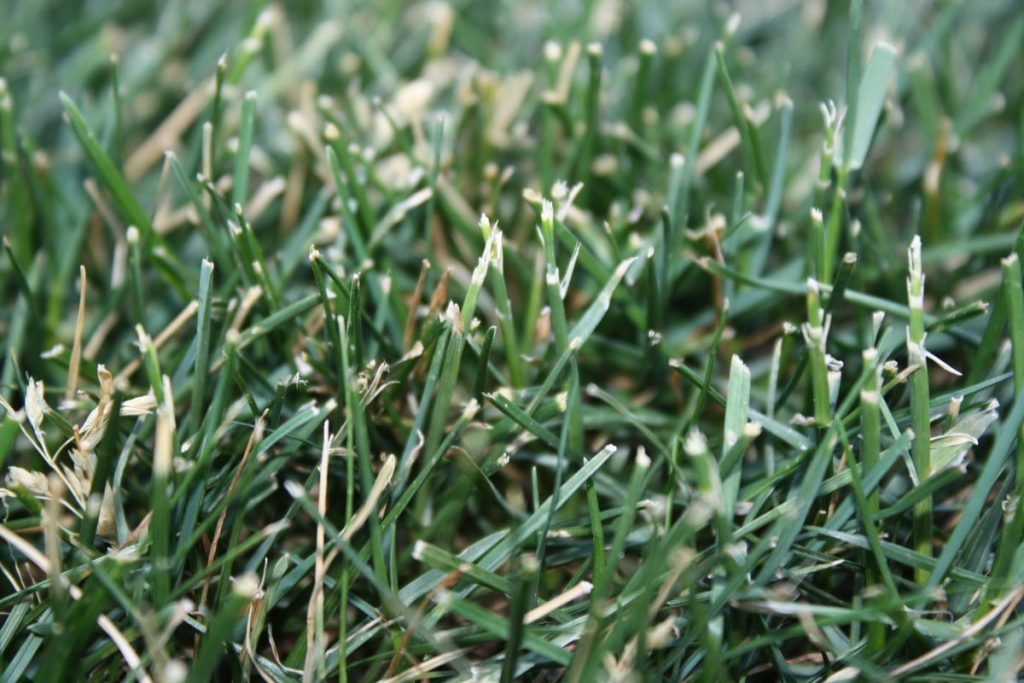Keeping the lawn in good condition throughout the year is not easy and even less if you do not know the causes of the possible problems. One of the most common problems in a garden is grass turning yellow. This problem is quite common as it is the result of a variety of situations that can occur on your lawn.
This article will talk about the possible causes of your grass turning yellow and how to solve it.
Problems with yellow grass can be caused by several factors. The most common is dryness, a poor watering frequency in summer or on very hot days can easily cause yellowing on your grass. Another very common cause is dog urine, this stain is more recognizable since we see round and very defined spots. Also, the excess of nitrogen is another factor to blame, if we do not calculate well the amount of fertilizer to be applied we can end up burning the grass.
Below we explain in detail more possible causes and solutions for your grass turning yellow.
Dryness
Heat and direct sunlight are the first factors to blame if we have yellow spots on our lawns. Extremely hot days and areas exposed directly to the sun all day can quickly dry out, stressing the lawn.
The lack of water will cause the grass to develop a dry and weak look. Is very important to have a good irrigation frequency. We must be careful to water as even as possible since uneven irrigation can cause yellow spots from the non-watered areas. Irrigation must be constant and deep.
On the other hand, excess water can also cause yellowing due to the rooting of the root. If you see that our soil has poor drainage, we must consider aeration practices to improve filtration and aeration.
Dog Urine
The second most common cause of the yellow spots on the lawns has 4 legs and is the darling of the house. Dog urine due to the high nitrogen content creates burns and stains on the lawn. These are easily recognized as yellow spots are bordered by greener grass. This is because the diluted edges of the urinary area are acting as a fertilizer for the grass, but the concentrated center is burning the roots.

Diseases
If you don’t have a dog and you water frequently, you may need a microscope to see the cause. Fungal diseases or harmful insects are the third most common cause of yellow spots on the lawn.
Insects that can be ants, or larvae tend to bite the roots and affect the development of the lawn and as a result, yellow spots appear. When the insects are responsible, we will notice that the yellowish spots do not follow any pattern. However fungal diseases, present more defined patterns that can be easily identifiable. In the first stages of fungal attacks, isolated spots will appear but with time they will increase in size. Knowing exactly what disease our lawn has is quite difficult at first glance. We must consult a specialist so that the exact disease can be determined in a lab.
The diseases are usually fungal, some of the most common being:
- Brown patch lawn disease.
- Dollar spot lawn disease.
- Gray leaf spot lawn disease.
- Leaf spot lawn disease.
- Pythium lawn disease.
- Red thread lawn disease.
- Rust lawn disease.

Fertilization
Fertilization is the fourth responsible when looking for the origin of the yellowing of our lawn. As we always mention the deficit or excess is a problem.
Nitrogen is the main nutrient that lawns need for healthy and lush growth. However, too much nitrogen can cause the lawn to turn yellow. This is because it burns the roots and changes the pH of the soil. This creates problems with the root’s ability to absorb other nutrients and water. On the other extreme, the nitrogen deficit also causes yellowish spots since the grass does not have the minimum nutrients to develop.
Bad Practices
Improper cultural practices are also responsible for yellowing grass.
Compaction: Over time, the grass generates a large number of dead roots at its base, which end up creating a compact waterproof layer, which prevents proper aeration. This can be avoided by scarification, a task that is usually practiced at the end of summer and winter. It consists of a superficial scratching of the ground with a scarificator.
Mowing Height: Although ideal cutting heights vary with the type of grass, most grasses grow to a height of 2 to 3 inches (5 to 7.6 cm) and should be cut regularly in summer and spring. However, the grass should be allowed to grow a little taller during the summer or periods of drought. Avoid cutting more than a third of the height of the grass in one session. Mowing too often also stresses the lawn unnecessarily, making it vulnerable to damage and disease.
We must also be careful if the blade of the lawnmower you use for your garden is of poor quality, or is chipped or broken, the tops of the lawn instead of being cut will be torn off, which weakens the grass and makes them prone to break easily. This situation is easier to diagnose as the patches will be seen over the entire lawn and not in isolated areas.

Natural Hibernation
Depending on the variety of grass you are planting, it may have natural hibernation periods. For best results, choose lawns that grow best in your area. Avoid planting warm-season grasses in cool areas as they grow dormant in fall and remain yellow until spring. Similarly, avoid planting cool-season lawns in warm areas.
Practical Solutions
Prepare the ground well: To get a strong and good-looking lawn, it is essential to study the soil and prepare it by leveling the ground and aerating it since this will allow grass to grow with better oxygenation. This task is more to prevent future problems and not so much as a curative solution.
Constant and uniform irrigation: Irrigation is a fundamental pillar to recovering and solving yellowing problems. If we have grass that is weakened and stressed by a water deficit, we must have the consistency of watering evenly and periodically to recover our grass, one abundant irrigation is not enough, is necessary 2/3 weeks of constant irrigation. We got to be careful since we can see results after the first irrigation, but our grass may relapse since it still does not have enough strength to withstand long periods of drought.
Fertilization: As we mentioned before, the excess or the deficit of fertilization can cause yellowish spots. Of all the elements that can produce yellowish spots, Nitrogen is the main element. The other components such as Potassium or Phosphorus have to be applied in a very high amount to harm the lawn.
Is important to establish a good fertilization schedule to avoid a weak appearance on our lawn. It is advisable to do it 2 times a year, even up to 3 if we see that the grass needs it.
When it comes to fertilizing, we must remember that we must do it after a good rain or water considerably after fertilizing, this will ensure a good dissolution of the fertilizer in the soil.
Fungicides and Insecticides
In case of confirming that we have a fungal disease, we must do a curative treatment. The fungicide to be used will depend on the disease. We must consult a local laboratory to know exactly how to proceed.
If it is not a disease or a fungus it may be an infestation of harmful insects. When using insecticides we must be careful as we can kill populations of beneficial insects.
Wrap-Up – Grass turning yellow
The main cause of your grass turning yellow is probably a lack of good irrigation or your four-legged friend. However, we must not discard more serious problems such as a fungal disease or a deficit of nutrients such as nitrogen.
All these four main causes are relatively easy to solve with a good irrigation frequency, a fertilizing schedule, and a preventive treatment against fungal diseases. And regarding your four-legged friend, new manners will solve the problem.

